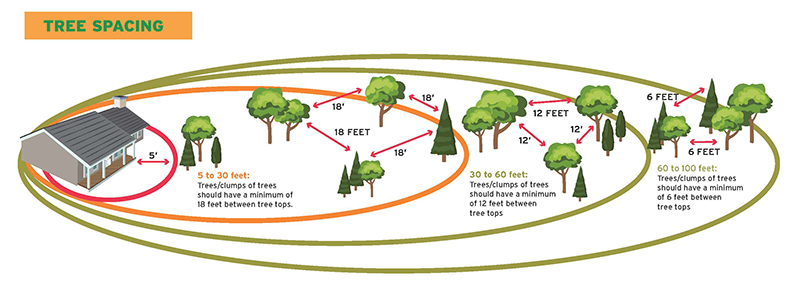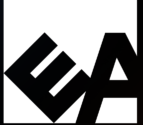
The first thing I want to do is recommend that you watch some of Fire Safe Marin’s excellent videos. If you want to create a defensible space around your home you need to understand what that means, and these videos do a great job of that. I’d start with this one, but they are all excellent. Yeah, I know, Marin county. Suspend any preconceptions you might have and watch this video. It’s excellent information presented in an honest and rational way.
In this video and blog post we’ll start looking at the terrain we need to deal with, changes we need to make, and how we will mitigate existing fire hazards. Where our solar installation locations will be, and how we will plan the electrical connections We’ll be covering our choice of backup system, the EG4 12000PV and wallmount battery specifications and features.
Step one is a walk around our property with the guidelines from the National Interagency Fire Center (NIFC) in mind. I did the same walkaround with a firefighter from the Maui County Fire Prevention Bureau who gave me some useful tips and coeected some of my misconceptions. FEMA also has a useful list here, though it seems a bit extreme (says the guy who is surrounding his property with a sprinkler system). I’m not going to reproduce it in this post–FEMA Wildfire Damage Prevention list. The Firewise Home Ignition Zone link in the list below is also a great resource. Not all of the items on the NIFC list below are relevant to my property, but it a good start–here’s the full list with some of my added comments:
- Clean roof surfaces and gutters regularly to avoid accumulation of flammable materials such as pine needles, leaves, branches, etc. –also make sure to clean under any of the vegetation close to your home. Remove all the leaf litter. I’m going one set further and removing the border vegetation and replacing it with weed cloth and gravel out to about 3 feet.
- Remove portions of any tree extending within 10 feet of the flue opening of any stove or chimney and keep branches off the roof. –I’m taking this a step further and trimming back trees to keep all the branches 10 feet or more away from the house.
- Maintain spark arrestors over all chimney or stovepipe flue openings – screens constructed of non-flammable material. Mesh openings of the screen should not exceed 1/2 inch.
- Clean debris from exterior attic vents and crawl space vents. Install 1/8-inch metal mesh screening to reduce embers from entering vents. — My home has enclosed soffits with fine mesh ventilation around the main house. The guest house has open soffits with mesh on the vents. I’m going to consider enclosing the soffits and at a minimum reinforce the mesh.
- Landscape vegetation such as shrubs should be spaced at least 15 feet apart to minimize fuel loading (the total amount of combustible material in a defined space).–I’m trimming everything back from the house and spacing landscaping more. We live in a jungle, everything grows very rapidly, so this is more of a maintenance issue than it might be for you.
- Remove low hanging branches from trees to height of 15 feet to remove ladder fuels (vegetation that allows a fire to “climb” up from the ground into the tree canopy).
- A fuel break should be maintained around all structures (refer to the Firewise Home Ignition Zone for spacing distances. This link is really important, it shows exactly how to modify your landscaping to substantially reduce the danger from wildfires. Some of the requirements are going to be extremely hard for us to meet–our home is a 25 year old home, perched on the edge of a deep gulch, surrounded by what is essentially tropical jungle.
- Dispose of stove or fireplace ashes and charcoal briquettes only after soaking them in a metal pail of water for 24 hours–we don’t have anything like this.
- Store gasoline in an approved safety can away from occupied buildings–we don’t store gasoline.
- Propane tanks should be far enough away from buildings for valves to be shut off in case of fire. Keep area clear of flammable vegetation–we have propane tanks next to the house to supply our stove and dryer, currently in a wood shed. I’m meeting with a contractor to build a safe enclosure that will match the house.
- All combustibles such as firewood, picnic tables, boats, etc. should be kept away from structures.–I’m working on this. Our house is stucco but it has wood trim and big Ohia wood posts that are largely decorative. The firefighter who inspected my house told me it’s not perfect, but that I should focus on things that are easy to set on fire, like leaf litter and dead vegetation. The posts would be like trying to light a log on fire–not easy.
- Garden hose should be connected to outlet.–We have hose reels with long hoses located so we can reach any spot close to the house. They are permanently connected to dedicated water outlets. I did that for convenience, it’s nice to know it also helps with fire prevention.
- Physical address should be visible on your home and posted at the driveway entrance. — One more item for my “to do” list
- Names of roads should be indicated and street signs visible at all intersections in your community. The county recently added signs to all the feeder roads. I was wondering why–no I know.
- All roads and driveways should be at least 16 feet in width. We barely meet this criteria
- Each home should have at least two different entrance and exit routes.–Nope, and it’s not likely to happen
- Have fire tools handy such as: ladder long enough to reach the roof, shovel, rake and bucket for water.–I have all this and more.
In my case I’m hiring a general contractor to help me make some modifications to make the house safe, an electrician to connect the solar inverter and battery to code, a tree service to beat back the jungle on the western edge of our home and remove all the bamboo, and we have a landscaping service that maintains the place. If I were younger I’d do most of this stuff myself, but I’m 78. I’m doing all the technical work and some of the sprinkler installation, but there’s no way I could DIY all this stuff. You’ll have to choose for yourself what parts of the project you can do, and what you need help with. This is going to be expensive for me, but I consider it the very best kind of cheap insurance. We’ve been paying for home and hurricane insurance for this house for 25 years, but even after spending all that money there’s no way that insurance would really replace our home and the things in it. If I can spend some time, money, and effort to protect it, then it’s the best investment I could make, and if it never proves to be necessary, and the sprinklers never get used, then that’s even better. Equally important, spending time, a little money, and effort to help our neighbors protect their homes is also not really altruistic. The best thing about this home, for all it’s comfort, serenity, and beauty, is our neighbors.
